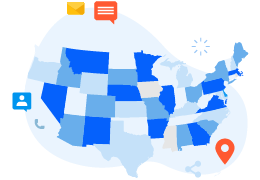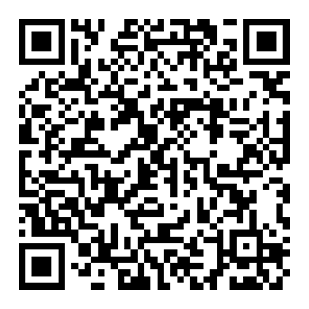华盛顿大学教授Ted演讲婴儿的语言天赋中英双语
编辑 | cc姐
来源 | 网络
人物简介
Patricia Kuhl,华盛顿大学认知与大脑科学研究所副主任、言语听觉学教授,主攻语言神经机制和大脑发展。
她在早期语言和大脑发展上的研究获得国际认可,研究显示出孩童在相当年幼时即拥有学习能力。Patricia Kuhl教授的研究深具重要性,证明了多早接触语言可改变大脑。此研究对于发展关键时期,双语教育和阅读准备,跟语言有关的发展障碍,以及电脑对语言的理解都深具影响。
关于宝宝语言学习关键期的最佳年龄段,众说纷纭。
比如:几岁开始学英语?有人说必须三岁以后,有人说当然是越早越好。宝爸宝妈们都听懵了,孩子学英语,到底从几岁开始最为合适呢?启蒙时间或早或晚又有何影响?
华盛顿大学教授,Patricia Kuhl(帕特里夏·库尔)在TED演讲中指出,0-7岁是人类语言学习的关键期,在此期间进行第二语言的学习都是合适的。
▲ 演讲截图
7岁以前,孩子的学习,主要靠大量地听以及其他无意识的影响,最后才能流利说话。7岁之后,再学习某种语言,主要靠主动学习,且学习效率不如7岁之前。
此外,Kuhl的研究表明,全世界的婴儿都是语言天才,他们能够区分所有语言的所有发音。
比如,美国的婴儿,既能分辨出汉语的四个声调,也能分辨出韩语的元音辅音和收音,而美国的成年人听汉语和韩语,只能辨别自己母语中的不同的音。
在婴儿出生后的第8到第10个月,婴儿会专心地听大人说话,大脑会自动搜集、整理、分析这些,最后建立“语言数据库”,可建立多种语言的数据库。过了1岁就不太行了。
换句话说,每个婴儿都有潜力掌握任意一种语言,但之后如果只听一种语言,就错过了掌握其它语言的黄金时期。即,1岁以下婴儿接触的语言,将局限他日后的语言发展。
不列颠哥伦比亚大学(UBC)与巴黎第五大学的科学家也发现,7个月大的婴儿就能分辨、学习不同的语言。
所以宝爸宝妈们给宝贝做英语启蒙时,完全不用担心:我家娃孩子会不会搞混了,最后英语没学好,母语也反倒说不利索?
那么从小让孩子接触英语启蒙学习,有哪些好处呢?
及时塑造新语境,接受度高
孩子从小学习英语,在其基本中文能力已经具备,但还没形成根深蒂固的中文思维的时候,对第二语言的接受程度很高,因此对第二语言的掌握也就会更容易。
第二种语言增加了孩子可用的词汇量,这导致两种语言相互加强,孩子甚至可以通过学习英文来增强对中文的掌握程度。
反之,太晚学习英语的孩子如果已经养成了中文思维,会不自觉地用学习汉语的方式来学习英语,那么要改变原有的思维惯性是很困难的,就必然会在今后的英语学习上遇到巨大的困难。这也是为什么我们中国很多人花了十几年时间学英语,但大学甚至研究生毕业后,英语仍然不能运用自如。
更地道纯正的学习效果
孩子模仿能力强、学习潜力巨大。
从小让孩子接触纯正、地道的英语教学环境,孩子在英语思维、语法及发音上更容易形成正确的意识和习惯,对未来的英语学习有很大的益处。
不过另一方面,在这个时期如果让孩子接触不够纯正地道的英语学习,也会很容易让孩子养成英语学习的坏习惯,改起来将会很麻烦。
目标性弱,更有利于激发学习兴趣
年龄小的孩子学习英语,没有明确的目的性,也不会像更大的孩子或者成人一样产生畏难情绪。他们通常更倾向于抱着浓厚的兴趣来接触英语,而这种热情对于培养孩子的英语能力无疑是非常有利的,往往能够取得更好的效果。
更易建立自信
新语言的启蒙学习往往能及时获得成果回报,而孩子学习语言的方式是自由且直观的。因此目标性较低的启蒙学习常常会在获得小回报时让他们感到快乐,从而建立起学习的自信而更加渴望学习,从而形成良性循环。
反之,当孩子错过了语言学习的红利期,日后在英语学习上面临困难和挫折时,特别是当感觉到自己不如别的孩子学得快学得好,将严重影响其自信心,造成对英语的抵触和恐惧感,学习效率往往变低,最后形成恶性循环。
最后,献上Kuhl教授的TED演讲文稿(节选):
I want you to take a look at this baby. What you’re drawn to are her eyes and the skin you love to touch.
我想让大家看看这个婴儿,你会被她的眼睛所吸引,也会想摸摸她粉嫩的肌肤。
But today I’m going to talk to you about something you can’t see — what’s going on up in that little brain of hers.
但今天我要跟大家讲讲你所看不到的东西, 在她的小脑袋里发生的事情。
What we see here is a mother in India, and she’s speaking Koro, which is a newly discovered language. And she’s talking to her baby. What this mother — and the 800 people who speak Koro in the world — understands [is] that, to preserve this language, they need to speak it to the babies.
我们看到的是一位印度母亲,她讲克罗语(Koro), 这是一种新发现的语言。 她正在跟她的宝宝讲话。这位母亲和全世界共800位讲克罗语的人都明白,要保留这种语言就必须对婴儿说这种语言。
▲ 演讲截图
And therein lies a critical puzzle. Why is it that you can’t preserve a language by speaking to you and I, to the adults? Well, it’s got to do with your brain. What we see here is that language has a critical period for learning.
这里有个关键的谜题:为什么跟你我这样的成年人说(一种新语言) 却不能保留它呢? 这是和你我的大脑有关。我们知道,学习语言有一段关键期。
The way to read this slide is to look at your age on the horizontal axis. And you’ll see on the vertical your skill at acquiring a second language. Babies and children are geniuses until they turn seven, and then there’s a systematic decline. After puberty, we fall off the map.
读懂这幅图的方法是看你在横轴上的年龄,而纵轴是你学习第二外语的能力。婴儿和幼童7岁前都是学习语言的天才,之后这个能力就会逐渐衰减,青春期后,曲线就掉到图外了。
▲ 演讲资料截图
No scientists dispute this curve, but laboratories all over the world are trying to figure out why it works this way
所有科学家都认同这条曲线,但全世界各大实验室都试图找出产生这种情形的原因。
Work in my lab is focused on the first critical period in development — and that is the period in which babies try to master which sounds are used in their language.
在我实验室的研究着眼于发展过程中的第一个关键时期,也就是婴儿试着掌握他们语言中的语音的时期。
We think, by studying how the sounds are learned, we’ll have a model for the rest of language, and perhaps for critical periods that may exist in childhood for social, emotional and cognitive development.
我们认为,通过研究语音是如何被学习的,就能建立起学习其他语言的模式,也许还能找出可能存在于幼童发展出社交能力、情绪、认知能力的关键期。
So we’ve been studying the babies using a technique that we’re using all over the world and the sounds of all languages. The baby sits on a parent’s lap, and we train them to turn their heads when a sound changes — like from “ah” to “ee.” If they do so at the appropriate time, the black box lights up and a panda bear pounds a drum. A six-monther adores the task.
我们一直在研究婴儿,用了一个我们用于世界各地和所有语言中语音上的技巧。 婴儿坐在父母的大腿上,训练婴儿听到声音改变时转头,从“ah”变成 “ee” 。如果他们在对的时间转头,黑盒子就会亮起来,熊猫也会开始敲鼓。六个月大的婴儿很喜欢这个游戏。
▲ 演讲资料截图
What have we learned? Well, babies all over the world are what I like to describe as “citizens of the world.” They can discriminate all the sounds of all languages, no matter what country we’re testing and what language we’re using, and that’s remarkable because you and I can’t do that.
我们从中了解到什么呢?全世界的婴儿,我喜欢称呼他们位“世界公民” 。他们能分辨所有语言中的所有语言,不论我们在哪一国用哪一种语言测试。这很了不起,因为你我都办不到。
We’re culture-bound listeners. We can discriminate the sounds of our own language, but not those of foreign languages. So the question arises: when do those citizens of the world turn into the language-bound listeners that we are?
我们是受文化束缚的听众。我们能分辨我们自己语言的语音,但无法分辨外国语言里的语音。 那么问题来了:这些小小的世界公民什么时候会变成像我们一样受文化束缚的听众?
And the answer: before their first birthdays.
答案是:一岁以前。
What you see here is performance on that head-turn task for babies tested in Tokyo and the United States, here in Seattle, as they listened to “ra” and “la” — sounds important to English, but not to Japanese. So at six to eight months the babies are totally equivalent. Two months later something incredible occurs. The babies in the United States are getting a lot better, babies in Japan are getting a lot worse, but both of those groups of babies are preparing for exactly the language that they are going to learn.
你在这里看到的是对东京和美国婴儿进行的转头测试,(测试)是在西雅图做的,让他们听“ra”和“la”的发音——这两个发音在英文里很重要,但在日语中却不是。对于6到8个月的婴儿,他们表现得完全一致。2个月后,不可思议的事发生了。美国婴儿对这些发音的掌握越来越好,日本的婴儿却越来越差,但是两这组婴儿都正出于准备学习母语的阶段。
▲ 演讲资料截图
So the question is: what’s happening during this critical two-month period? This is the critical period for sound development, but what’s going on up there? So there are two things going on. The first is that the babies are listening intently to us, and they’re taking statistics as they listen to us talk — they’re taking statistics. So listen to two mothers speaking motherese — the universal language we use when we talk to kids — first in English and then in Japanese.
所以问题是,在这关键的2个月发生了什么?这是语音发展的关键阶段,(婴儿的脑袋里)到底发生什么了?有两件事发生了:第一,婴儿一直专心听我们说话,他们一边听一边在脑海里做统计。听两位妈妈说的“妈妈语”——也就是我们对孩子说话时一般使用的语言,(视频里)首先是英语,然后是日语。
▲ 演讲资料截图
During the production of speech, when babies listen, what they’re doing is taking statistics on the language that they hear. And those distributions grow.
在语言产生的阶段,当婴儿聆听时,他们也在做统计,统计他们听到的语音,语音的分布情况也会改变。
And what we’ve learned is that babies are sensitive to the statistics, and the statistics of Japanese and English are very, very different. English has a lot of Rs and Ls. The distribution shows. And the distribution of Japanese is totally different, where we see a group of intermediate sounds, which is known as the Japanese “R.” So babies absorb the statistics of the language and it changes their brains; it changes them from the citizens of the world to the culture-bound listeners that we are. But we as adults are no longer absorbing those statistics. We’re governed by the representations in memory that were formed early in development.
我们了解到婴儿对语音的统计很敏感,而日语与英语的语音统计是十分不同的。英语有很多的“R”和“L”语音,如分布图所示,日语的语音分布是完全不同的。我们可以看到一组分布其间的语音,就是所谓的R音。婴儿会吸收语言的统计分布,进而改变他们的大脑,这使他们从世界公民变同我们一样受文化局限的听众。但我们成年人不再会吸收这些统计结果,我们受制于早期发展形成的记忆。
So what we’re seeing here is changing our models of what the critical period is about. We’re arguing from a mathematical standpoint that the learning of language material may slow down when our distributions stabilize. It’s raising lots of questions about bilingual people. Bilinguals must keep two sets of statistics in mind at once and flip between them, one after the other, depending on who they’re speaking to.
所以我们看到的是,关键期如何改变我们的语言模式。从数学的观点来看,学习语言材料的能力在我们语言分布稳定后就会慢下来,这也引出很多双语人士的疑问。会双语的人必须同时记住两套统计资料,并根据谈话对象的不同而随意切换。
So we asked ourselves, can the babies take statistics on a brand new language? And we tested this by exposing American babies who’d never heard a second language to Mandarin for the first time during the critical period. We knew that, when monolinguals were tested in Taipei and Seattle on the Mandarin sounds, they showed the same pattern. Six to eight months, they’re totally equivalent. Two months later, something incredible happens. But the Taiwanese babies are getting better, not the American babies. What we did was expose American babies during this period to Mandarin. It was like having Mandarin relatives come and visit for a month and move into your house and talk to the babies for 12 sessions. Here’s what it looked like in the laboratory.
所以我们自问,婴儿可以对全新的语言进行统计吗?我们测试了这个,让处于发展关键期,从未听过第二种语言的美国婴儿第一次听中文。我们已经知道,用中文语音测试台北和西雅图的单语婴儿,他们显示相同的模式,6到8个月大的婴儿他们的辨音能力完全一致。2个月以后,不可思议的事发生了,台湾婴儿表现得更好,而不是美国的婴儿。我们所做的就是让这个关键期的美国婴儿多听中文,就像有个说中文的亲戚来拜访一个月,住到你家,并让婴儿上了12节中文课。
▲ 演讲资料截图
We had to run a control group to make sure that just coming into the laboratory didn’t improve your Mandarin skills. So a group of babies came in and listened to English. And we can see from the graph that exposure to English didn’t improve their Mandarin. But look at what happened to the babies exposed to Mandarin for 12 sessions. They were as good as the babies in Taiwan who’d been listening for 10-and-a-half months. What it demonstrated is that babies take statistics on a new language. Whatever you put in front of them, they’ll take statistics on.
我们还得有一个对照组,来证明光进一趟实验室是无法增进中文水平的,所以有一组婴儿来实验室听英语。 我我们可以从图上看到,接触英文并不能提高他们的中文。但看看上过12节中文课的(美国)婴儿有着怎样的改变。他们的中文就跟住在台湾听了十个半月中文的婴儿一样好。这证明了婴儿能对新的语言做统计,不论你在他们面前说哪种语言,他们都会做统计。
But we wondered what role the human being played in this learning exercise. So we ran another group of babies in which the kids got the same dosage, the same 12 sessions, but over a television set and another group of babies who had just audio exposure and looked at a teddy bear on the screen. What did we do to their brains? What you see here is the audio result — no learning whatsoever — and the video result — no learning whatsoever. It takes a human being for babies to take their statistics. The social brain is controlling when the babies are taking their statistics.
我们也想知道人类在这一学习过程中扮演着怎样的角色。所以我们设置了另一组婴儿,他们也停了12节中文课,但是是通过电视上课(视觉组),另外有一组婴儿是在屏幕上只有泰迪熊的电视听中文(听觉组)。我们对他们的脑袋做什么了?这里看到的是听觉组结果——完全没学到什么;这是视觉组的结果,也没有学到东西。所以婴儿只对真人的声音做统计,婴儿做语音统计时是由掌管社交的大脑来控制的。
We want to get inside the brain and see this thing happening as babies are in front of televisions, as opposed to in front of human beings. Thankfully, we have a new machine, magnetoencephalography, that allows us to do this.
我们想了解大脑内部,探究婴儿在电视和真人面前,大脑会发生怎样不同的情况。幸运的是,我们有个新机器,脑磁图检测仪能帮我们做到这一点。
This is little Emma. She’s a six-monther. And she’s listening to various languages in the earphones that are in her ears.
这是小Emma,她有6个月大。她正用通过耳机听不同的语言。
It’s a technical tour de force. What are we seeing? We’re seeing the baby brain. As the baby hears a word in her language the auditory areas light up, and then subsequently areas surrounding it that we think are related to coherence, getting the brain coordinated with its different areas, and causality, one brain area causing another to activate.
这是科技的杰作。我们在看什么?我们在看婴儿的大脑。当婴儿听到她母语里的词 时,大脑听觉区会亮起来,接着四周临近区域也会亮起来。我们认为这和一致性有关,使大脑和其他不同脑区域相协调,并且有因果关系,大脑区域引起其他区域的活化。
—End—
戳一戳:往期精选
语感启蒙 | Where Is a Thumb?
“妈妈,我同学说你好土”
协和儿童专家:总给孩子喝饮料,这些“甜蜜陷阱”必须知道!
浓浓的中式英语基因,如何让娃的发音变得好听
采访李玫瑾:父母的早期教育,说“不”一定要早,还要有技巧!
被邓超写给女儿的一句话暖哭:原来爸爸都这么喜欢硬撑
最末,记得扫描下方二维码
获取更多育儿干货,邂逅AI机器人——萝小逗
快戳“阅读原文”,遇见小逗!
版权声明:以上内容为用户推荐收藏至Dreamgo网站,其内容(含文字、图片、视频、音频等)及知识版权均属用户或用户转发自的第三方网站,如涉嫌侵权,请通知copyright@dreamgo.com进行信息删除。如需查看信息来源,请点击“查看原文”。如需洽谈其它事宜,请联系info@dreamgo.com








